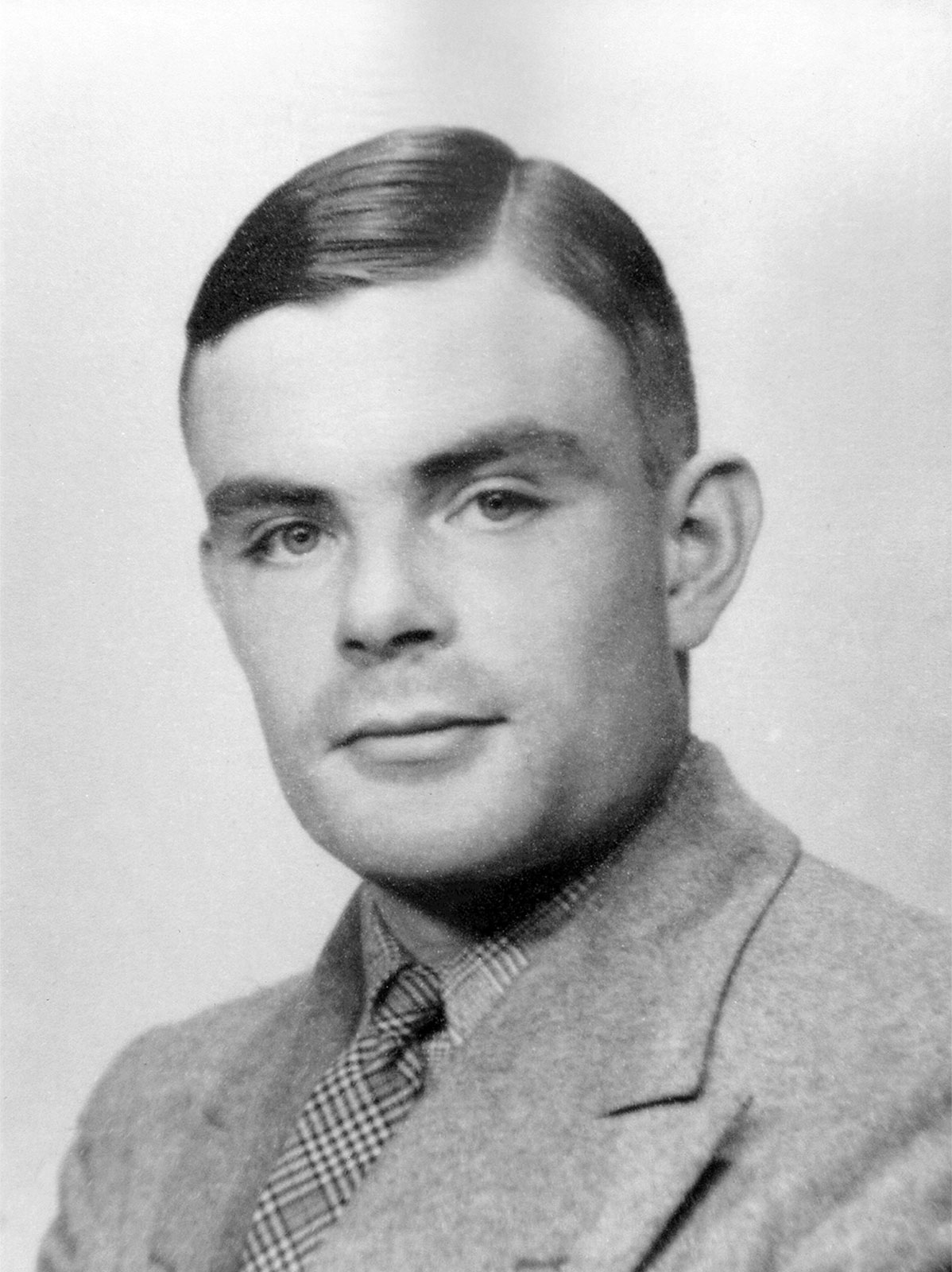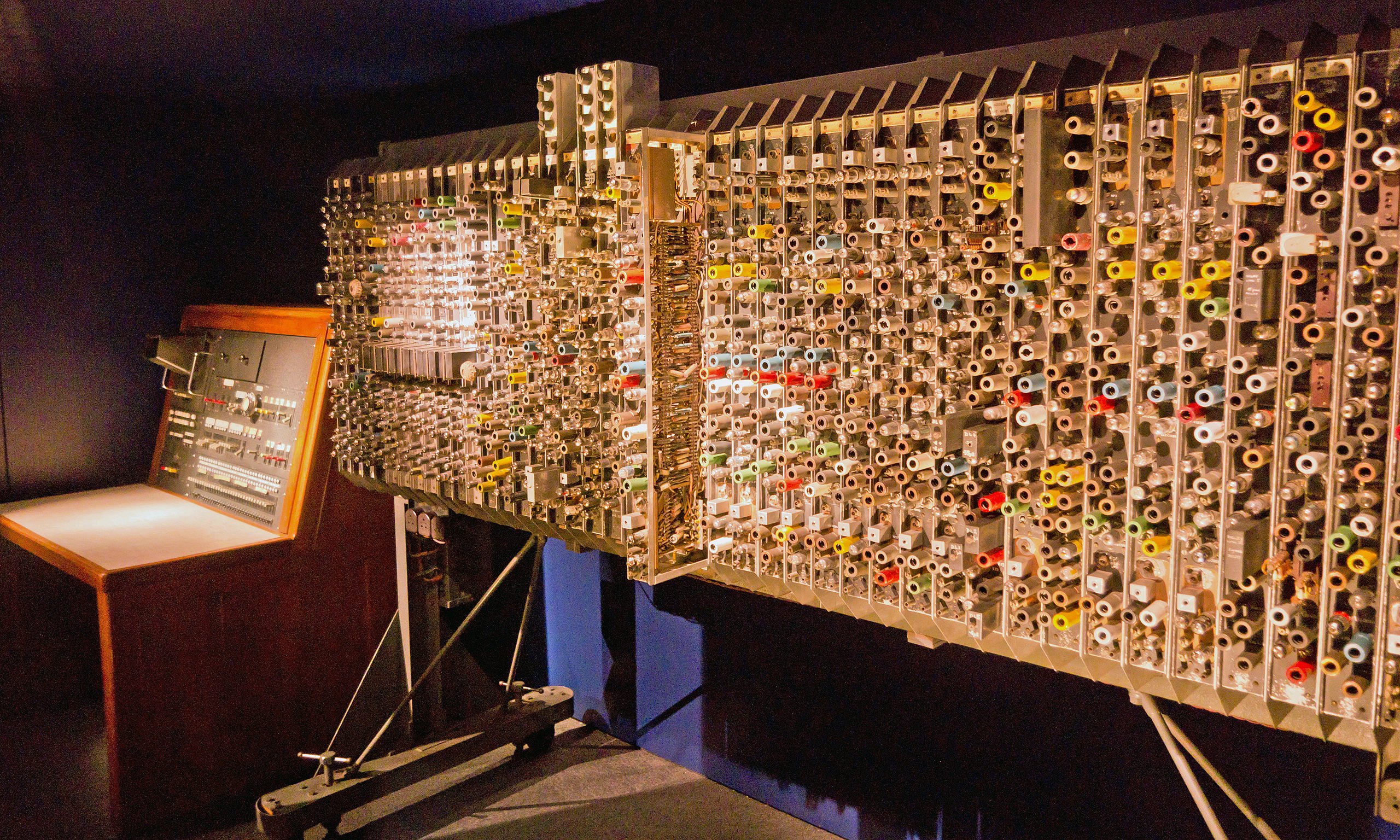3.2 Alan Turing, Claude Shannon and the Early History of Computation
03 Early Computers and Mainframe Games
Alan Turing, Claude Shannon and the Early History of Computation

Portrait of Alan Turing (b. 1912), an English mathematician, computer scientist, logician, cryptanalyst who was immensely influential in the development of modern computation.

A portrait of Claude Shannon (b. 1916), an American mathematician, electrical engineer, and cryptographer known as "the father of information theory"
"The press heralded [the early mainframe computer ENIAC] as a 'giant brain'. It was an apt description given that many computer scientists dreamed of creating an artificial intelligence. Foremost among these computer scientists were the British mathematician Alan Turing and the American computing expert Claude Shannon... They saw artificial intelligence as the ultimate aim of computer research and both agreed that getting a computer to defeat a human at Chess would be an important step towards realizing that goal." (Replay, p. 4).
Alan Turing and Claude Shannon are two foundational figures in the history of modern computation. Turing worked as a cryptographer for the British army during World War 1, but is best known for his contributions to the theoretical foundations of modern computation. What is theoretical research into computers? In essence, Turing was a mathematician whose work and research involved developing early computers, while researching and thinking, and then using math to formalize models of what a computing machine might look like or be capable of.
For example, here are some of the practical inventions in computation created by Turing.

If you've heard of or seen the film "The Imitation Game" starring Benedict Cumberbatch, you may know a little about one of Turing's great accomplishments as a military cryptographer: the invention of a machine, the Bombe, capable of deciphering encoded messages from the Germans.
During World War II, the German army used a cipher device called the Enigma to send messages to one another. The Enigma code devices resembled a typewriter, The British had even captured one of the devices used to create the code. However, what made the system so secure and the code so difficult to break was that each message was created based on a "set of machine settings that were generally changed daily during the war, based on secret key lists distributed in advance, and on other settings that were changed for each message."(Source)
In 1940, Turing worked with a team of other cryptographers to design a machine that could automatically run an encoded message through all of the different possible encryption keys for that day.
Here, you can see a video of a reconstruction of this machine, the Bombe in action (skip to 8:37, watch until 9:45)
Alan Turing also designed the Automatic Computing Engine in 1945. It had the equivalent of 25 kilobytes of memory, accessed at a speed of 1 MHz, pictured below.

The Automatic Computing Engine, an early computer. A series of multicolored vacuum tubes.
While these practical inventions were of major historical significance, as mentioned above a great deal of Turing's legacy lies in his theoretical contributions. Two salient examples are the Turing Machine and the Turing Test. The Turing Test is well established culturally as a milestone for the evaluation of whether a computer can be said to be "intelligent" or lifelike.

In essence, Turing said that if you had a computer and a person (B and C), and an evaluator (A) separated from each other, and B and C were responding to questions from A – if A cannot guess with certainty which of B and C are a computer, then artificial intelligence has been created.
We can see how this dovetails nicely with his ideas about how the development of a chess program could be a boon for the creation of artificial intelligence. Why should this be so important?